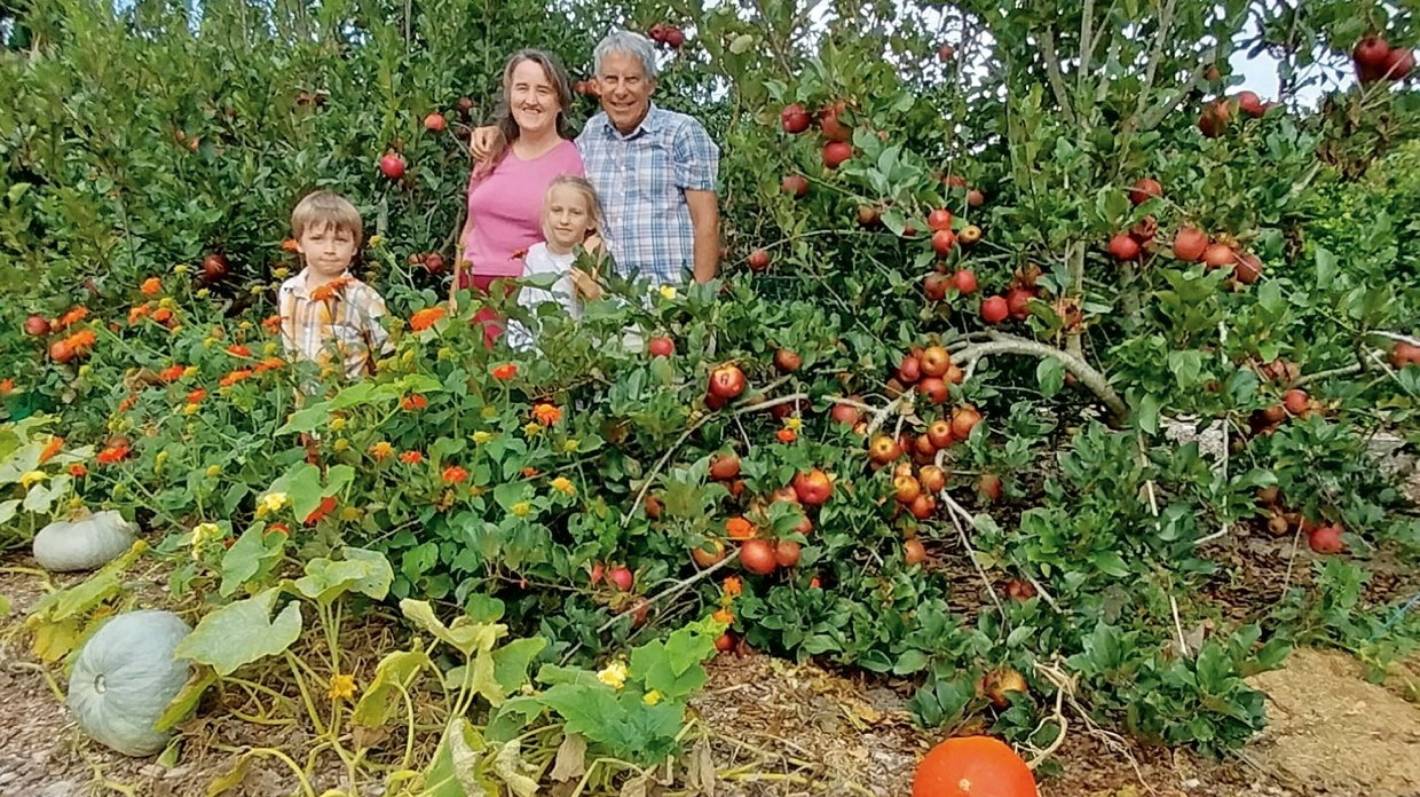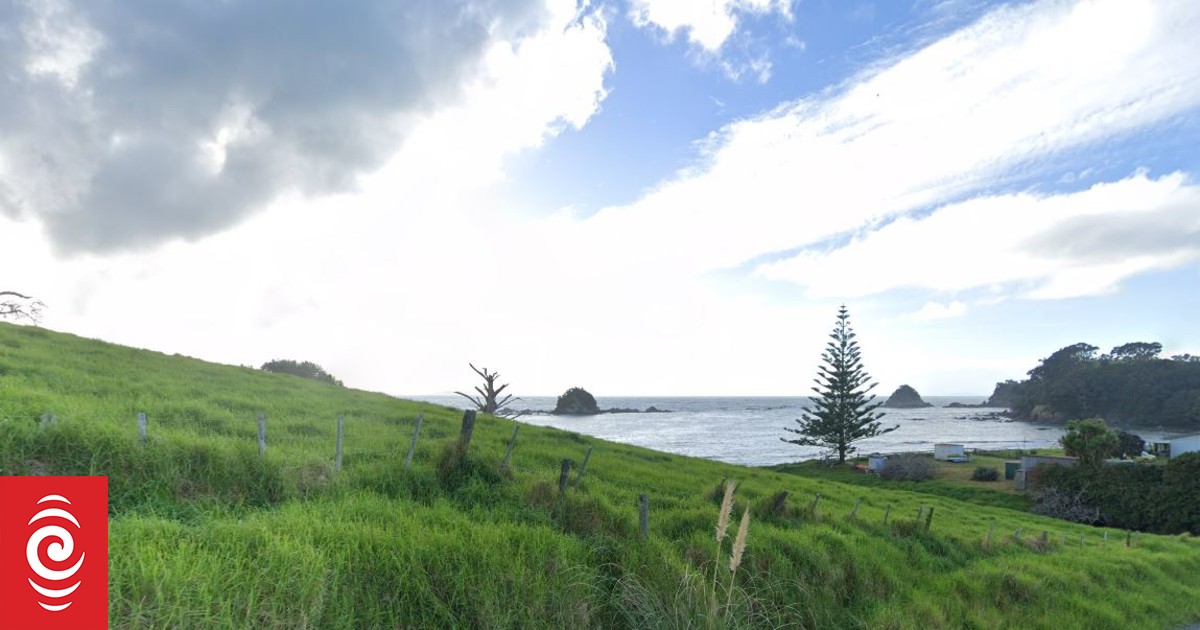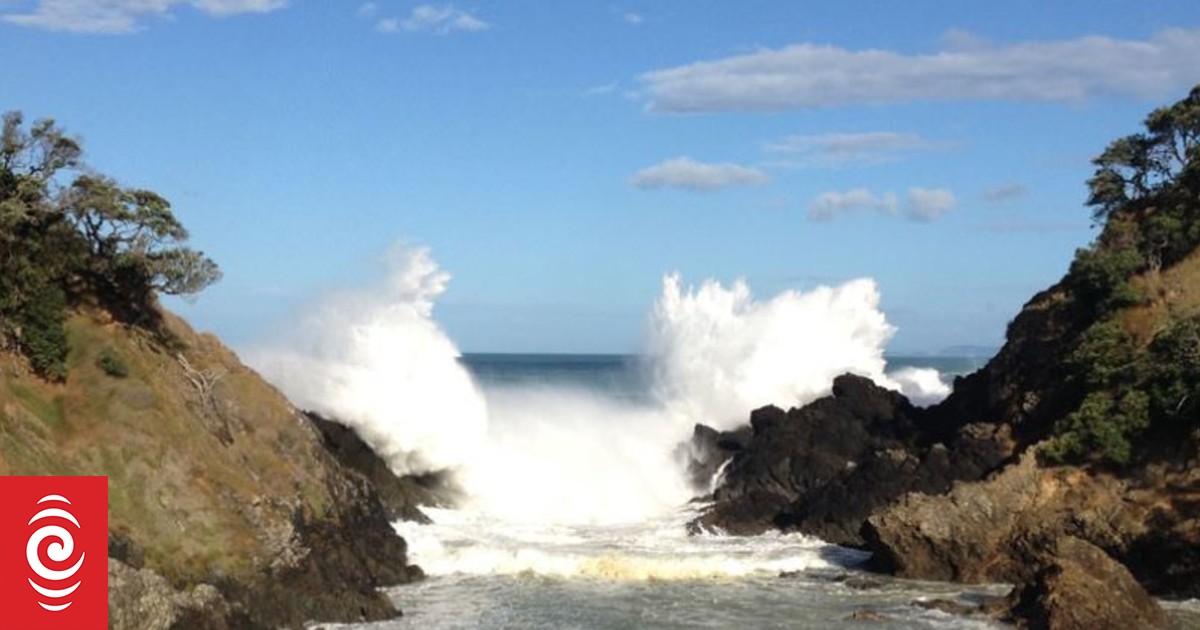When Graeme Kettle and Debbie Raphael bought their two acres in Oromāhoe near Kerikeri five years ago, they had a vision for a small garden.
Kettle grins at the memory: “That lasted two months. We kept expanding our gardens to the extent that we were able to feed our family of five within the first year, and we now have fruit trees, vegetables, herbs and native plants in garden beds and food forest plantings spread across the property.”
They had always intended to be self-sufficient in food. Kettle had experimented with sustainable food production for years on a previous property; Raphael comes from a line of gardeners.
“Creating our edible organic landscape here has been a family project. Debbie’s mother, Jackie, lived on the property with us until last year and had a key role in the setup of the gardens, and our children, Tamsyn (7) and Theo (5), are actively involved and have their own part of the garden,” Kettle explains.
READ MORE:
* How to prepare soil for a happy spring planting
* Gardeners transform bare paddock to bountiful no-dig food forest
* How to get a white butterfly-free vege garden without killing the good bugs
* Permaculture enthusiast hasn’t bought veges in decades
Sandra Simpson / Stuff
About five years ago, Tauranga gardener Mel Atkins shared how she saved about $2000 a year growing her own fruit and veges.
Kettle, Raphael and Jackie have different garden styles and ideas, so in the interest of family harmony they decided to each be responsible for their own garden areas but to collaborate on doing the work together.
Stuff
Graeme Kettle and daughter Tamsyn in the recently planted mini food forest in their home garden.
Raphael says: “My focus is on edible herbs, flowers and weeds, Graeme’s interest is in food forest, permaculture and syntropic agro-forestry systems, and Jackie is keen on growing veges. We cleared a flat, accessible area for Jackie’s garden first to create our initial vege bed. In the process, we made mounds of kikuyu that we added roadkill possums to, covered in black plastic and left to rot down into rich soil. We added cowpats from the neighbours’ cows, mown grass clippings and seaweed in autumn, then planted kūmara, potato and earth gems in the new beds in spring.”
Kettle is especially keen on experimenting with these root crops. “Last season I accidentally planted kūmara and potatoes in the same bed and found each crop’s yield was three times more than when they grew in their own bed. This aligns with food forest thinking that plants grown closely together produce better, partly because of their mycelium network.”
In their first weeks on the property, they discovered that it is covered in volcanic rocks. “This means we have to use pick-axes for planting which slows everything down, but the rocks were the resource for the old dry stone walls here that act as massive heat sinks,” Raphael says. “We’ve restored and extended them, and plant early and late tomatoes (12 varieties) and climbing beans (10 varieties) against them.”
The couple brought in machinery to chop and mulch gorse, then got help from Wwoofers (workers on a well-known programme called Worldwide Opportunities on Organic Farms) to manage the regrowth and grub out the thousands of blackberry plants.
Gradually, they created more growing beds and mulched them heavily so there’s no need to irrigate.
They grow and harvest food year round, and this year Kettle planted an experimental syntropic agro-forestry garden. “Right from the first season, the system is productive. I’m experimenting with densely planted rows of luffa sponge, corn, ‘Hopi’ beans, turmeric, artichoke, sugarcane, comfrey, tithonia, bana grass (for biomass), tamarillos, elderberries, plums, guava, tropical apricot, cherimoya, inga, macadamia, olive, mulberry and natives like kawakawa, kohekohe and māhoe.”
Stuff
Debbie Raphael in her edible herb and flower garden.
One of the property’s most productive gardens is a border of apples (13 varieties, mostly heritage), plums, climbing beans, pears and 11 varieties of squash and pumpkins including the dramatic tromboncino. Once the squash and pumpkins are harvested, and the trees lose their leaves, the understorey is perfect for beets, spinach and parsley.
Raphael’s main garden sits in the arms of a rock wall and is divided into seven alphabetical sections mostly so she can keep track of her 35 varieties of herbs and edible flowers.
“During our first year here I researched any edible weed on the property. My herbs include clary sage, coriander, bergamot, amaranth, tarragon, yarrow, echinacea and evening primrose, and I grow flowers like hibiscus, hollyhock, daylilies and dianthus to eat, plus dahlia bulbs (they taste better than radish) and fuchsia berries,” she says.
Stuff
Spent bean plants with dahlias and amaranth enjoying the warmth of the rock walls in Graeme and Debbie Kettle’s edible forest garden in Northland.
“I research everything before tasting it and we never grow anything poisonous so that the kids can graze safely. We’re passionate seed savers, particularly of heritage varieties, and we belong to seed saving and crop swap groups in our wonderful local community where we all share knowledge.”
The property features in the annual Northland Edible Garden Trail and this year listed 250 mostly edible plant varieties.
“The range of what we grow means we get few pests or diseases because the whole ecosystem is in balance. We both work at part-time jobs to enable development here, and spend the rest of the time immersed in this fascinating, healthy and beautiful environment,” Kettle says.




